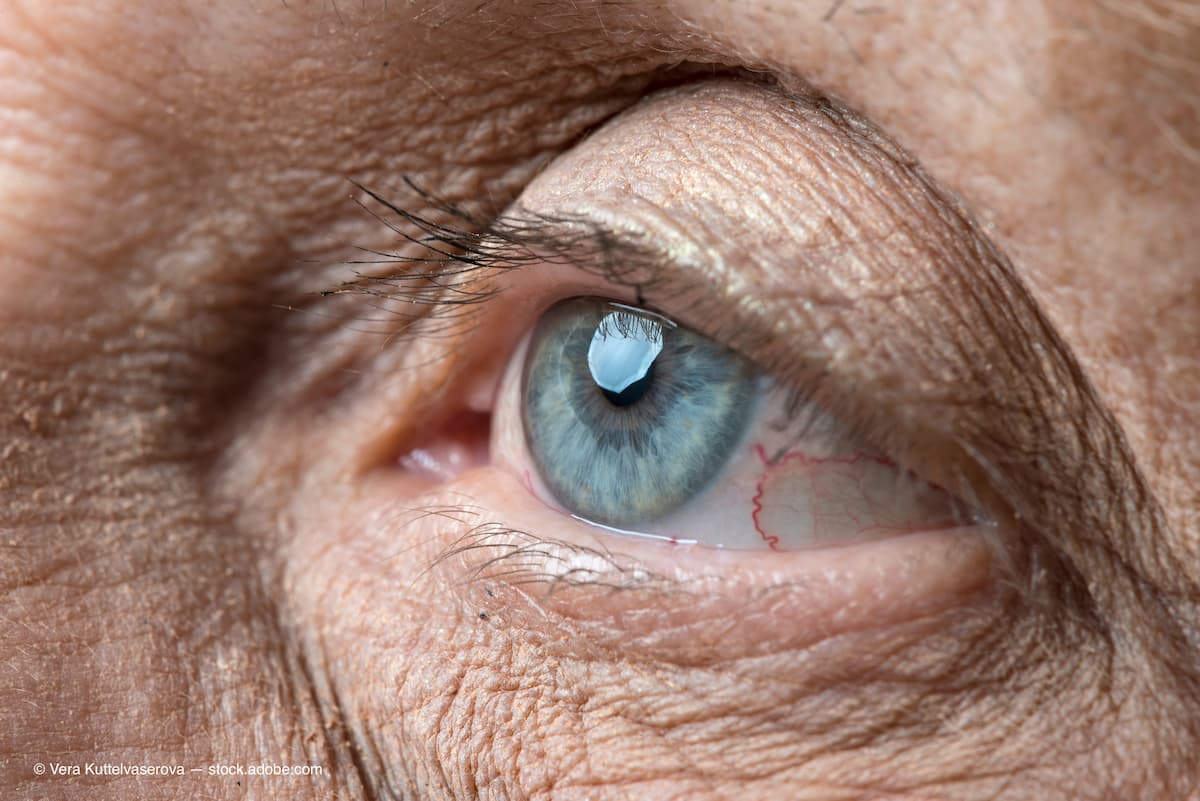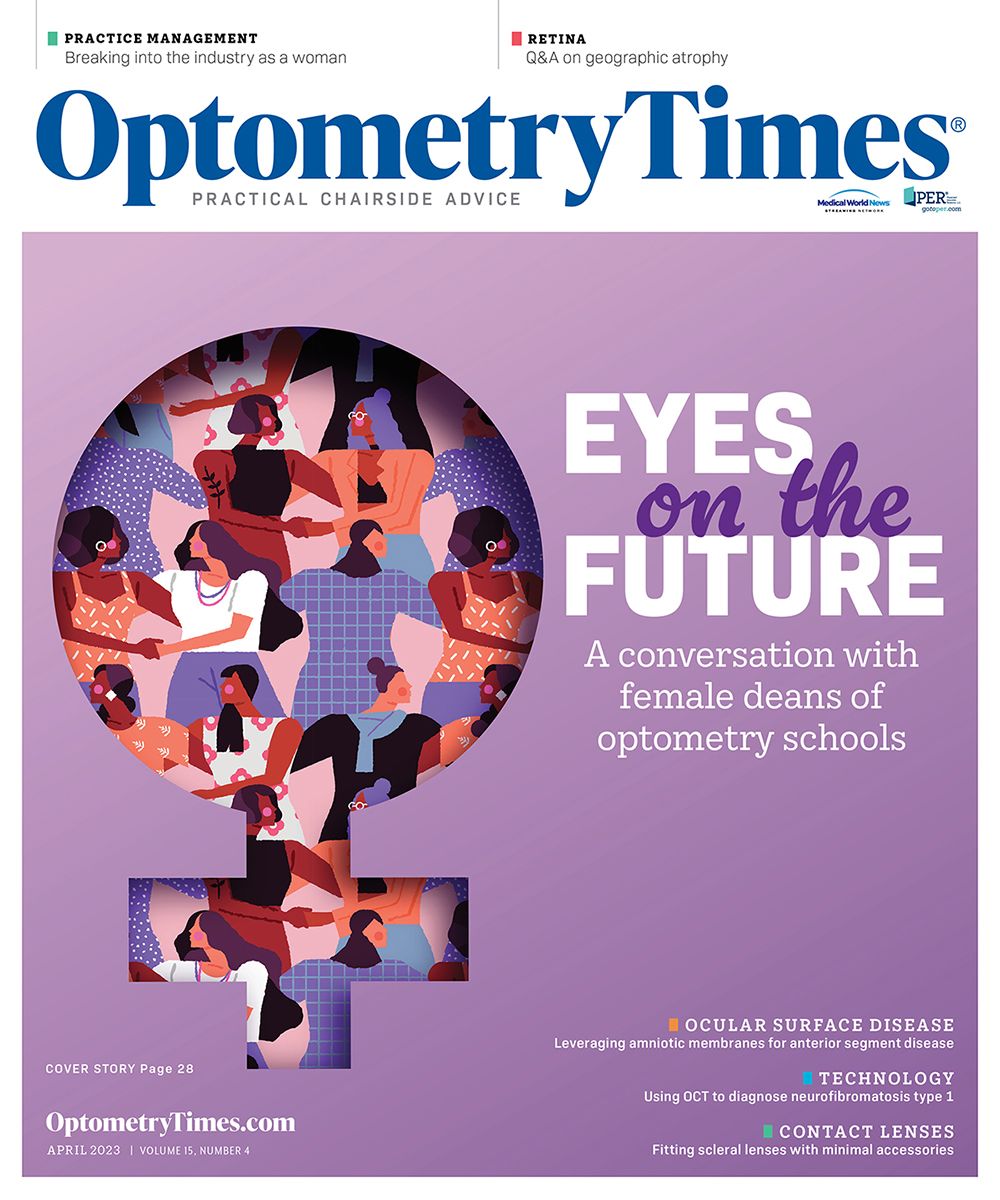Q&A: How is the landscape of geographic atrophy changing?
Pegcetacoplan’s recent FDA approval creates an option for patients with dry AMD.
The FDA has accepted a new drug application and granted priority review for intravitreal avacincaptad pegol (Zimura; Iveric Bio) with a Prescription Drug User Fee Act date of August 19, 2023. (Image credit: Adobe Stock/Vera Kuttelvaserova)

Geographic atrophy, an advanced form of dry age-related macular degeneration (AMD), had no FDA-approved treatment until February 2023. Pegcetacoplan (Syfovre; Apellis) is the first treatment to break into the market of geographic atrophy, and its approval is based on clinical data from the phase 3 OAKS (NCT03525600) and DERBY (NCT03525613) studies.
But there are others on pegcetacoplan’s heels. The FDA has accepted a new drug application and granted priority review for intravitreal avacincaptad pegol (Zimura; Iveric Bio) with a Prescription Drug User Fee Act date of August 19, 2023.
Related: Geographic atrophy, pegcetacoplan, and the future of care with Dr. Euin Cheong

Euin Cheong, OD, a low-vision and contact lens specialist at Lexington Eye Associates in Concord, Massachusetts, talked with Optometry Times about the anticipated effect of pegcetacoplan and her hope for future therapy options patients with geographic atrophy.
Why are optometrists important in the diagnosis of geographic atrophy?
Macular degeneration is a very, very common eye disease, as we all know, and optometrists are often the very first to discover the beginning stages of it, whether it’s little bits of drusen or just full-blown, advanced macular degeneration. Patients often come to optometrists for glasses or contacts for vision relief and then, to their surprise, they are diagnosed with macular degeneration. So we’re often on the front lines of the diagnosis and the referrals.
What are your thoughts on the pegcetacoplan approval from Apellis?
I think it’s a very exciting launch. You know, it’s been almost 2 decades of treatment for wet AMD, but really nothing on the market at all for dry AMD. And it’s been frustrating for our patients. It’s been frustrating for doctors to tell our patients, “Hey, I’m sorry; there’s nothing.” And to finally be able to have something FDA approved [that gives] hope to our patients is huge.
I think this is just the beginning of treatments for dry AMD. And I’m also looking forward to future research and treatments…. I think the biggest change will be that we can finally give our patients hope that their vision is just not a slippery slope of vision loss and that they can hold on to some sort of functionality with their vision and their eyesight. And as long as they’re adhering to the monthly or every-other-month injections then they can still enjoy the activities they do every single day and they can still see faces of loved ones.
What can optometrists do to improve their care of patients with geographic atrophy?
I think the biggest thing is that thus far is when we take [optical coherence tomography scans] or imaging for macular degeneration, one of the main things we look for is: Has it transitioned from dry to wet? Picking up on that very early on is very important so that we can get them the care they need with a retinal specialist. A lot of focus has been on picking up on a little leakage and a little bit of neovascularization that’s been happening. But I think now we have to pick up on geographic atrophy as soon as it starts and give them the help they need even earlier than we had previously. It’s important for optometrists to really hone their ability to analyze OCT images and to be able to properly refer patients to retinal specialists at the very beginning signs of geographic atrophy.
Do you anticipate that this approval of pegcetacoplan will change the comanagement of patients with geographic atrophy?
I think it will. I think it will help us build a tighter relationship with our retinal specialists. I’m sure all optometrists have a handful of retinal specialists they love referring patients to. Our retinal specialists will be swamped more than ever with [cases of] geographic atrophy. And I think it’s important for us to make sure we have enough specialists to refer to and also be able to build proper communication bridges with our retinal specialists so that we can seamlessly [cotreat] in between injections as well.
Is there anything else that you would like to bring up?
One important thing, especially as a low-vision specialist, is functionality of vision. I think with the launch of any treatment for dry macular degeneration, it will really allow patients to hold on to that….The OAK and DERBY trials really show the microperimetry and how the injections allow patients to preserve certain pockets of their macula. [Pegcetacoplan is] really special. It’s a really special medication. And I’m looking forward to patients having more hope regarding their vision and building that relationship with their doctors so that they can preserve as much as they can.

Newsletter
Want more insights like this? Subscribe to Optometry Times and get clinical pearls and practice tips delivered straight to your inbox.